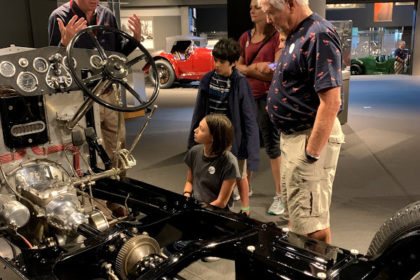
I didn’t grow up around incredible cars, nor in a family of enthusiasts, but a few of my earliest and fondest memories involve automobiles. The first was as a child, being driven to school by mom, when she shared a passing anecdote that she had always wanted to be a race car driver (that story would come to haunt my future self). My father’s first job, in Bridgeport, Pennsylvania, was one of those careers only seen in movies of a previous era… he’d walk to the nearby gas station where he’d pump gas, check oil, and wash windows.
My story, probably being revealed to my parents for the first time here and now, was that not only did I once get pulled over for speeding in the middle of the night in full Renaissance Faire regalia (which they know about), but that I used to drag race my Plymouth Sundance in the school parking lot and once leapt the car off the curb so that I wouldn’t lose a race. I didn’t lose.
I blame mom for planting that seed of pushing the pedal to the floor. I’m grateful to both of them for imparting a fascination with what these machines could mean.
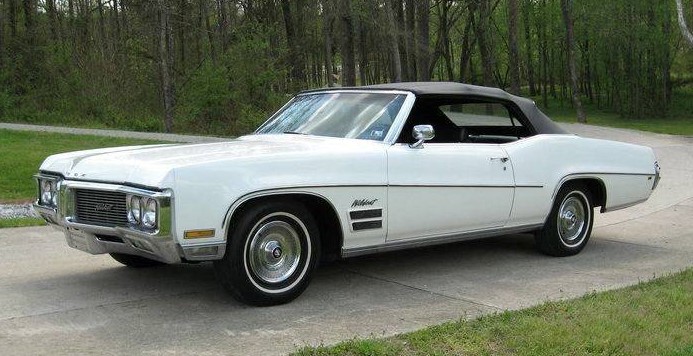 In college, before really knowing how I’d turn out professionally, it was apparent, but unrecognizable, that I’d be drawn to creating things. I spent my evenings in my dorm teaching myself how to build websites, and I spent my afternoons working on a 1970 Buick Wildcat convertible. The car was a disaster but it was mine; I could tinker, I could restore, and I could fit 12 college friends in the backseat of the 40 foot behemoth. As the car finally met its end, beyond my ability to repair, my then hopeful girlfriend and I conveniently found ourselves stuck on a date in a dead convertible.
In college, before really knowing how I’d turn out professionally, it was apparent, but unrecognizable, that I’d be drawn to creating things. I spent my evenings in my dorm teaching myself how to build websites, and I spent my afternoons working on a 1970 Buick Wildcat convertible. The car was a disaster but it was mine; I could tinker, I could restore, and I could fit 12 college friends in the backseat of the 40 foot behemoth. As the car finally met its end, beyond my ability to repair, my then hopeful girlfriend and I conveniently found ourselves stuck on a date in a dead convertible.
We were married a few years later.
The automobile tells the stories of our lives.
Just as we have moments in time crystallized by places, music, or movies that imprint upon us, the automobile leaves an indelible impression on our experiences and who we become.
Article Highlights
Experiencing the Impact of the Automobile
In my line of work, I’m often telling the stories of experiences that parallel entrepreneurship. How, for example, a generation of innovation stems from the Star Wars films, how we are indeed doomed to repeat history, even ancient history, if we don’t learn from it, and we can and should learn of entrepreneurship from as far back as the Romans, or how an expected experience with The Beatles turned me from making that Wildcat work to doing something in media.
Over the holiday this year, I had an incredible opportunity to introduce my family to Rick Shafer, an amazing docent at The Revs Institute.
I’ve told the stories of how music, film, and more have impacted what I do as an entrepreneur and how I want to instill in my family many of the same qualities but it wasn’t until the stories and experience that Rick shared that it clicked; that the history of the automobile is as important, if not more so, to not just who we are but who we should and could become.
“Win on Sunday, Sell on Monday,” shared by Mr. Shafer as we looked at The Revs Institute’s Mustang and Ferrari collection, was a notion coined by Ford dealer Bob Taska, who recognized the fact that the easiest way to sell a new car was to put it on the track and show people what it could do. Establish a market and what it wants first, THEN sell. Peter Drucker, renown marketing and management economist, later, in noting what creates the most value in innovation: “The job of marketing is to make sales superfluous.” Sounds familiar.
C. Miles and Sam Collier are credited with introducing sports car racing in the 1930s to the United States; together, the pair were early members of the Sports Car Club of America, fostering an early passion for auto racing in their next generation, particularly The Revs Institute founder, Miles Collier.
In 1986, Mr. Collier acquired the Cunningham Museum collection of longtime family friend Briggs Swift Cunningham, which included the first Ferrari racing car ever sold in the United States and one of six Bugatti Royales ever produced.
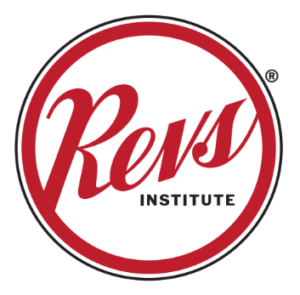 What is now known today as the Collier Collection began to take shape during the late ’80s and ’90s as Mr. Collier continued to grow his private collection of the finest, most original examples of sports cars and ephemera. He soon became widely recognized for his groundbreaking preservation aesthetic, which elevated the original function and integrity of historic automobiles above recrementitious renovation styles.
What is now known today as the Collier Collection began to take shape during the late ’80s and ’90s as Mr. Collier continued to grow his private collection of the finest, most original examples of sports cars and ephemera. He soon became widely recognized for his groundbreaking preservation aesthetic, which elevated the original function and integrity of historic automobiles above recrementitious renovation styles.
Above all, providing the automobile with a platform that demonstrates the sheer power and influence that this great, modern invention has profoundly contributed to our culture and history remains Mr. Collier’s tireless mission. The Revs Institute was founded in 2008 as a reflection of that determination and to serve as a center of scholarly study.
And that’s where I stood, 3 generations in Naples, Florida, hearing not just the impact of Briggs Cunningham and the Collier family but how substantially the automobile, since before the turn of the last century, has influenced the way we all build innovative companies.
Inspiring Innovation
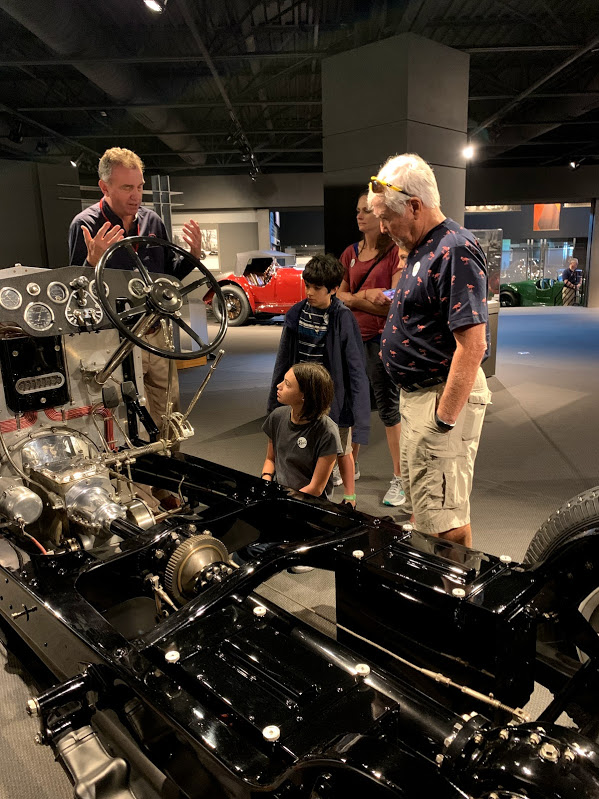 My oldest daughter has her sights set on being an aerospace engineer and already brilliant in robotics, still in middle school, she is looking to the Air Force Academy as her future. Of that age, I got the eye roll when I shared that we were going to a historic car museum; that is, until The Revs Institute’s collection and the exceptional story telling of Shafer, caught her attention, along with that of my father (who, incidentally flew in the Naval Reserve). My oldest and dad were introduced there to how the developments of the auto engine and the aerodynamics that went into the iconic fins and racing design of everything from the Formula 1 cars to Ford Mustang’s early shift of racing from European dominance to the United States, are woven in how we find ourselves in the air, and in space.
My oldest daughter has her sights set on being an aerospace engineer and already brilliant in robotics, still in middle school, she is looking to the Air Force Academy as her future. Of that age, I got the eye roll when I shared that we were going to a historic car museum; that is, until The Revs Institute’s collection and the exceptional story telling of Shafer, caught her attention, along with that of my father (who, incidentally flew in the Naval Reserve). My oldest and dad were introduced there to how the developments of the auto engine and the aerodynamics that went into the iconic fins and racing design of everything from the Formula 1 cars to Ford Mustang’s early shift of racing from European dominance to the United States, are woven in how we find ourselves in the air, and in space.
The impact of the automobile
Consider this list for a moment…
- The steam engine
- Internal combustion
- The starter
- Diesel fuel
- Anti-lock brakes
- Automatic transmission
- Power steering
- Airbags
- GPS
- Catalytic converter
- The three-point seat belt
- The hybrid
- Stability control
- Onboard diagnostics
- Seamless gear shifting
- Smart keys
- Turbochargers
- Turn signals
- Cruise control
Now, many of those innovations might not be familiar to you, but many are, and the market demand for those innovations, thanks to the automobile, have led to our mass adoption of smartphone maps, electric vehicles, autonomous vehicles, smarthomes with keyless entry, and more.
The innovation and market demand models uncovered by the auto industry, impact every facet of our lives as entrepreneurs. The history, stories, and data of the automobile industry are so much more important to our culture and economy than the lone personal story of the first car we bought, or when our heart skipped a beat the first time blue & red lights appeared in the rear view mirror.
The auto industry might define American innovation, if not global innovation, far more than Silicon Valley.
Among the earliest electric vehicles is the Detroit Electric, a car that looks not too dissimilar from those early Model Fords because it’s precisely as old. Seeing one of those very automobiles, in the garage of The Revs Institute, made my kids question why it seemed that the electric car was a recent invention… “it certainly isn’t,” I shared; “industry and politics have an impact on what we think is possible and it’s up to you to question otherwise.”
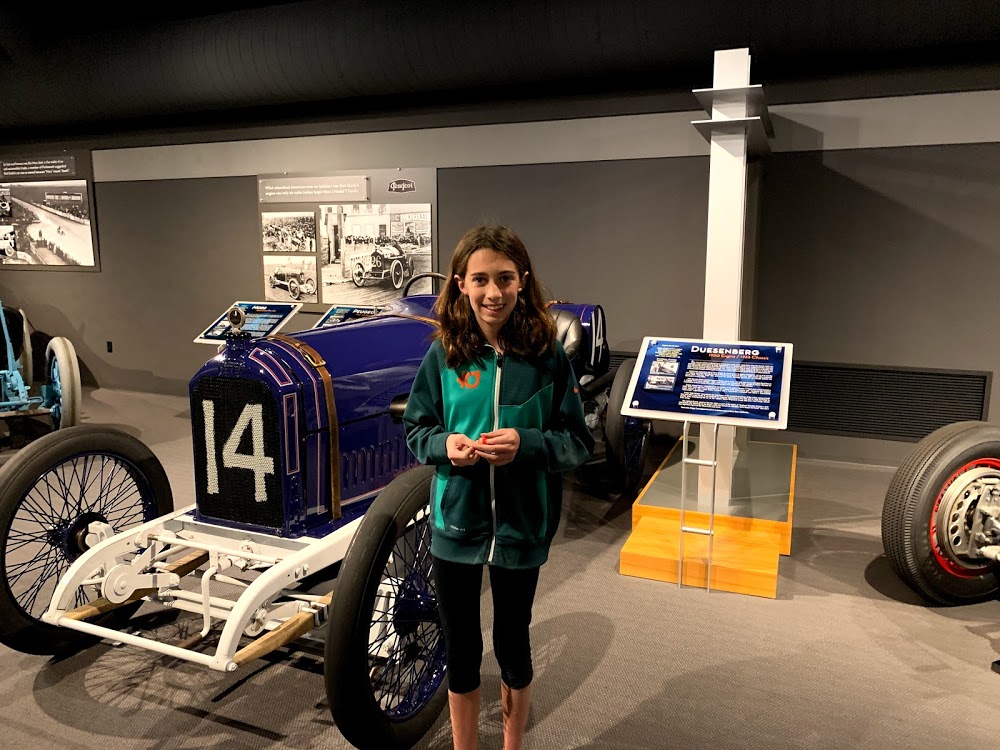
As my family and I turn with Shafer to look at the even more historic cars, the fact that our future is in STEAM, not STEM, became all the more clear. STEM (Science, Technology, Engineering, and Maths) is the hot topic in education today, despite the fact that notable entrepreneurs throughout the world are noting that STEM is what we replace; it’s the Arts that make us human.
Indeed, the automobile is the epitome of that convergence, how STEM makes the innovation possible but the art, the design, aesthetic, and media, of the automobile, establishes our desire of it.
My second daughter is an aerial artist. She’s incredible at it as well, with silks in our house, she practices daily and at 11 finds herself in class with college kids. Her love is for the circus, and with my personal passion for the theater, music, and media, I celebrate that… with a measure of the concern I’m sure you know I’d have as a parent… who wants their kid to run off and join the circus?
As though prescient, Shafer points out that the earliest automobiles were often introduced to the public at that very thing – as an experience at the circus. I saw it instantaneously light up in my daughter’s eyes; that her flair for performing was what brought invention to life.
STEAM More Than STEM in Education
Fins, reminiscent of WWII fighter planes that helped the automobile appeal to returning vets, early headlights in cars literally being nothing more than candles, medallions (hood ornaments) that were custom-made by car owners to personalize their car, the story of one of the early Collier owned Bentleys being a highlight at New York City’s Museum of Modern Art, our experience with The Revs Institute, with this unique experience with the history of the automobile, painted this story in my mind that we can ill afford to lose… how art, design, marketing, and media, are the pivot points of technical innovation.
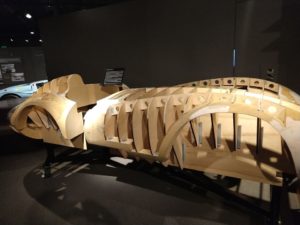 Because of the appeal and demand for the automobile, NASA found ways to perfect the water cooling system of space suits, seen in the water-cooled racing suits early automobile drivers tested with NASA as a way to survive the heat of being so close to the engine.
Because of the appeal and demand for the automobile, NASA found ways to perfect the water cooling system of space suits, seen in the water-cooled racing suits early automobile drivers tested with NASA as a way to survive the heat of being so close to the engine.
My girls’ minds raced with potential and questions at the notion shared that women were always considered as capable as men, as they heard that women really only didn’t own early automobiles merely because of the strength required to start them and the early requisite mechanic that essentially needed to be there anyway… hearing that Bertha Benz, yes the wife of the Karl Benz you likely recognize, is not only a pioneer of many early automotive inventions, but she’s essentially the first person ever to take a horseless carriage on a long distance journey, unaware that she shouldn’t.
Our tour ended with an experience that couldn’t have been more classic for The O’Brien Family. My wife’s favorite car, the Mini Cooper S that she’d owned for a few years after we’d married, was a story brought forth as we saw and heard how the earliest Cooper, the Austin, was an exercise in making a car as small as possible while still fitting the family of four inside. And nearby, an early Volkswagen Beetle that gave my kids a chance to get in a slug bug punch to their dad.
“Revs wants to drive the recognition of the automobile as not only one of the world’s greatest social change agents,” Collier says, “but also one of the highest expressions of all that is great in the human mind and spirit.”
It was with that Volkswagen, the People’s Car, that the impact of the automotive industry on our economy and culture of innovation closed with such a clear picture. Across the room, the East German alternative. A car considered such a disastrous and dangerous vehicle, built under the control of communism, that its story alone reflects the need for free market entrepreneurship, innovation, and the artistry and competitiveness of the people who have a love for what they do, that we can invent the things that change the world.






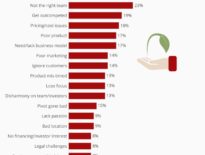

Awesome experience Paul and incredible observation. Well done. Concerns me that it’s conceivable that future generations won’t own cars. They’ve been such a part of the American story.
Nice ride, Paul
Remember that beast parked in the driveway sticking out to the sidewalk and neighbors complaining lol
Vincent Leung I dont know about all that Vince, I just remember feeling like we were rollin’
By the time I was roommates with Paul the car never ran lol
Ahhhh such great memories!!!
Thanks for this. I spent my life working at Ford, back when it still was the ameircan industry. I think there is a history to tell about how and why jobs went overseas and how we could have learned from that to avoid doing it again in other tech… Alas, I’m not sure we will learn from it. Great article, glad someone is still.thinking about the car in American innovation!
That’s your car?!? I could’ve sworn this was you. #somewherenearLakeway
You forgot the person who encouraged you to buy it- and thought you were crazy at the same time!
Paul, we’re working on the same notion that STEAM and not STEM is what matters in the future. Drop me a line to see if we can do something together?
Amanda, lets! The Revs Institute was an inspiration and eye opening. Beyond the automotive narrative, the work we’re doing in MediaTech Ventures is along the same lines… media/marketing is the convergence of Art and Technology.